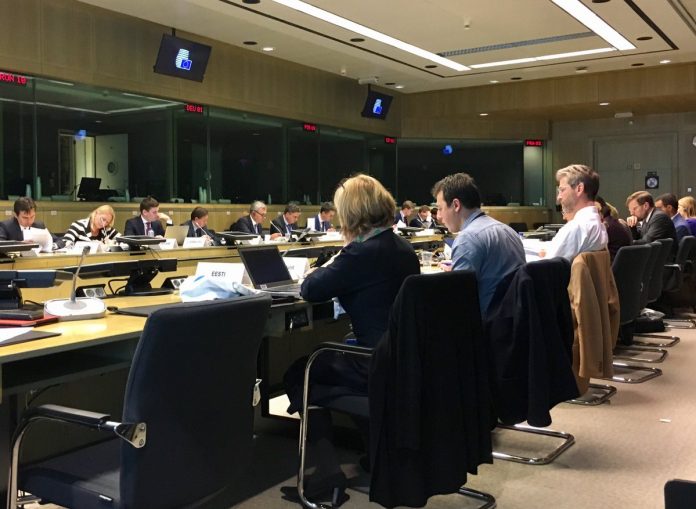This article is written by Pooja Bhardwaj.
Table of Contents
Lessons to be learnt from international arbitral institutions
There are several institutions worldwide that administer arbitration proceedings. While some of these institutions may be popular in a national or regional context, only a handful has emerged as victorious in an international context.
This section shall study: (a) what goes into parties’ choice of arbitral institutions; (b) which are the most successful arbitral institutions; & (c) why these institutions are more successful than others, with a specific focus on the SIAC & the HKIAC.
Factors that affect parties’ preference for certain arbitral institutions
One of the foremost reasons why parties choose a particular arbitral institution is the arbitration rules that apply as a result of such a choice. “Therefore, arbitral institutions which provide for rules which are clear, efficient & flexible to accommodate parties’ needs & expectations tend to be favoured. However, several other factors such as geographical location, reputation, neutrality, quality of the legal system where the arbitral institution is located, the panel of arbitrators & pricing policy are considered by the parties when selecting an arbitral institution.”
A 2015 survey conducted by the School of Arbitration at the QMUL in collaboration with White & Case LLP that sought responses from a variety of stakeholders in international arbitration across the world (“QMUL Survey”) reported that “parties generally considered the following four factors in decreasing order of importance while choosing an arbitral institution:
- high level of administration (i.e., the proactiveness & responsiveness of the arbitral institution;
- perceived neutrality or ‘internationalism’ of the arbitral institution; the
- ability of the arbitral institution to administer arbitrations across the world / its global presence; &
- free choice of arbitrators (no exclusive list of arbitrators maintained by the arbitral institution).”
On the other hand, “features that are specific to institutions such as represents/expertise raise expertise in specific types of matters, costs of services provided by the institution, fees of arbitrators etc., while important, were secondary to the above factors.”
Most preferred arbitral institutions
“According to the QMUL Survey, the International Court of Arbitration of the International Chamber of Commerce (“ICC Court”), the London Court of International Arbitration (“LCIA”), the HKIAC, the SIAC & the Arbitration Institute of the Stockholm Chambers of Commerce (“SCC”) are the most preferred arbitral institutions.” “Out of these, the ICC Court & the LCIA have consistently been ranked in the top two in previous surveys conducted by QMUL.”
Reasons behind the success of the top five arbitral institutions
“An examination of the reasons behind the success of the leading arbitral institutions in the world reveal certain commonalities: (a) sufficient support from the Govt. or the business community; (b) its location in a seat of arbitration which has an arbitration-friendly legislative framework & judiciary; (c) advantages offered by the arbitral institution, either unique advantages such as geographical positioning or expertise, or more generic advantages such as party-friendly rules, an experienced & skilled panel of arbitrators etc. For instance, the LCIA was established in 1892 by cooperation between the City of London & the London Chamber of Commerce.”
The growth of two of the premier arbitral institutions, the LCIA & the ICC Court coincided with the growth of international arbitration itself. Their popularity increased with developments in the international arbitration landscape, such as the adoption of The Convention on the Recognition & Enforcement of Foreign Arbitral Awards (“New York Convention”), the ICSID Convention & the UNCITRAL Model Law on International Commercial Arbitration (“UNCITRAL Model Law”).
Both the ICC Court & the LCIA were established to fill a perceived need effectively providing dispute resolution services near. The ICC Court was set up to growth in international trade by providing an effective mechanism to resolve international commercial disputes. Similarly, the LCIA’s success can be attributed to a large extent, to the fact that its establishment came at a time when commercial parties were interested in private adjudication of their disputes by a tribunal constituted by them, & which was familiar with the area of business related to the dispute. The LCIA provided them with a simple, efficient, cheap & less adversarial procedure for dispute resolution. The LCIA’s link with the Chartered Institute of Arbitrators (“CIArb”) which jointly administered the LCIA with the City of London & the London Chamber of Commerce & Industry for over a decade (1975 – 1986) has been another strength.
“Both these institutions have played a significant role in the growth of international arbitration, through their lobbying efforts, & the production of guidelines, practice notes & reports. The LCIA has built its reputation on its role in the foundation of the International Dispute Resolution Centre & its voice in the international arbitration community.” “Similarly, the ICC Court lobbied for the adoption of the 1923 Geneva Protocol on Arbitration Clauses & played a huge role in the drafting & adoption of the New York Convention.”
“The SCC, established in 1917, has had a slightly different & somewhat delayed path to success as it gained popularity towards the latter half of the 20th century. During the 1970s, the SCC gained immense popularity amongst American, Soviet & Chinese parties.” “Its success was built on the role of Sweden as a neutral forum for resolution of the trade disputes involving parties from the East & the West during the Cold War period.” “Even now, SCC arbitration is popular amongst parties from Russia & other CIS states, particularly in disputes in the oil & gas sector.” “The continued success of the SCC has, like in the case of the other successful arbitral institutions, centred around the neutrality of Sweden, its pro-arbitration judiciary & legal system, a modern set of arbitration rules, & a well- respected board consisting of Swedish & international practitioners.”
1. The Singapore International Arbitration Centre
“The SIAC started operations in 1991. In a quarter-century, it has emerged as one of top five arbitrational institutions worldwide. It has an active caseload of approximately 600 cases, with 271 new cases filed in 2015.” “The SIAC is a preferred arbitral institution for Indian parties, with Indian parties contributing the largest number of case filings after Singaporean parties.”
The SIAC’s popularity can be attributed primarily to (a) the pro-arbitration stance of Singapore’s government; (b) Singapore’s arbitration-friendly judiciary; (c) the advantages offered by the SIAC as an arbitral institution; & (d) other advantages of Singapore as a seat of arbitration.
a) Singapore’s pro-arbitration Govt.
“The SIAC was established as part of the Singaporean government’s efforts towards the creation of an arbitration industry in Singapore.” The years preceding & following the establishment of the SIAC saw “major changes to Singapore’s arbitration landscape – the adoption of the New York Convention in 1986, & the enactment of the IAA (governing international arbitrations) which was modelled on the UNCITRAL Model Law in 1994.”
“The SIAC was set up by the Govt. with two governmental agencies, the Economic Development Board & the Trade Development Board as its shareholders, & operated for many years under its aegis. The Govt. also played a role in promoting the SIAC at an international level, getting international arbitration practitioners to be associated with the institution.”
“Further, the Govt. has a clearly articulated philosophy of ensuring a legislative framework that is supportive of arbitrations. The Singapore legislature has been attuned to changes in the international arbitration landscape, acting quickly to clear ambiguities in the law & bring it in line with internationally accepted arbitration principles. This is amply illustrated by the fact that there have been 7 amendments to the IAA since its enactment. Moreover, where judicial decisions have been conflicting or ambiguous on points of arbitration law, the legislature has been quick to enact legislative changes, often within a matter of months.”
“Apart from changes to the IAA, other supporting legislation enacted by the legislature has ensured Singapore’s attractiveness as an arbitration hub. For instance, this year Singapore passed amendments to its Civil Law Act legalising the third party for arbitration & associated proceedings”.
Other efforts involve creating an environment conducive for arbitrations by facilitating foreign lawyers & foreign law firms to practice in Singapore. Under Singaporean law, non-residents do not require work-permits to render arbitration services in Singapore, nor does there exist any restriction on the nationality of counsel & arbitrators involved in arbitration proceedings in Singapore.
“Tax incentives have also been introduced to promote arbitration & to encourage international law firms to provide international arbitration services in Singapore, including the International Arbitration Tax Incentive which allows qualifying law practices a tax exemption of fifty per cent on incremental income which arises out of international arbitration cases which culminate in Singapore or in which substantive hearings have been held in Singapore”. There also exist “tax exemptions for income derived by non-resident arbitrators for arbitration work carried out in Singapore.”
b) Arbitration-friendly judiciary
“Singapore’s judiciary has traditionally been supportive of arbitration, respecting party autonomy & finality of the arbitral award. In one instance illustrative of the judiciary’s regard for party autonomy, the Singapore Court of Appeal upheld an arbitration agreement providing for SIAC arbitration in accordance with the Rules of Arbitration of the ICC.”
“Singapore’s courts are reluctant to interfere in arbitration proceedings, save under limited circumstances mentioned in the law. The courts are strongly pro-enforcement. For instance, Singapore courts have refused to interfere with the finality of the arbitral award stating that even if there was an error of law & / or fact made by the arbitral tribunal, the courts could not interfere.” “Similarly, they have given a narrow construction to the public policy ground for refusal of enforcement of arbitral awards, stating that arbitral awards shall be set aside only in the most ‘egregious’ cases where “elementary notions of morality have been transgressed.” “As of March 2015, Singapore courts had not refused enforcement of any arbitral award on the ground of violation of public policy.”
c) Intrinsic factors
The SIAC has a Board of Directors with some of the best arbitrators & counsel from across the world, providing the institution with international expertise. “The Arbitration Rules of the SIAC (“SIAC Rules”) have a reputation of being party-friendly. The SIAC has continuously reviewed its rules, six times to date, to keep pace with the developments in international arbitration. They contain provisions for multi-contract arbitrations, consolidation of arbitrations, joinder of parties, emergency arbitrators & a novel procedure for early dismissal of claims & defences.”
d) Other advantages of Singapore as a seat of arbitration
Singapore has a reputation of “adherence to the rule of law with an independent judiciary. Further, Singapore is perceived as a neutral corruption-free venue”. It also has all the other attributes of an arbitration-friendly jurisdiction – the adoption of the New York Convention & UNCITRAL Model Law, & a supportive legal regime & judiciary which gives parties the flexibility to decide matters related to arbitration, both procedural & substantive.
Further, Singapore is the regional headquarter for many multinational companies, which also contributes to the arbitration docket in Singapore, & consequently of the SIAC.
2. The Hong Kong International Arbitration Centre
“The HKIAC, like the SIAC, has built a formidable reputation within a short span of time. The HKIAC was established in 1985 & has managed to become the third most preferred arbitral institution worldwide within thirty years.” “The HKIAC registered 271 new arbitrations in 2015.” “The HKIAC is a preferred arbitral institution amongst parties in the Asia-Pacific, particularly Chinese parties.”
Support from the business community & the Govt.
“The HKIAC was set up by the business & professional community in Hong Kong in response to the need to provide dispute resolution services in Asia.” “As in the case of the SIAC, the Govt. of Hong Kong & the business community provided funding to the HKIAC.” “The Govt. also ensured that the HKIAC got an entire floor of a building in the heart of the business district in Hong Kong for use as a hearing centre.”
“The HKIAC has also benefited from the support it enjoys from the local bar. Two lawyers, Neil Kaplan QC & Dr Michael Moser, were instrumental in the establishment of the HKIAC”. “The local bar has also helped in marketing the HKIAC & in lobbying the Govt. to upgrade Hong Kong’s arbitration infrastructure”.
Hong Kong’s progressive legal framework
“Arbitration was officially recognised as a dispute resolution mechanism in Hong Kong as far back as 1855 under the Civil Administration of Justice (Amendment) Ordinance.” “However, a majority of changes that are relevant from an international arbitration perspective took place post-1977. Although Hong Kong had incorporated the New York Convention into its legislation in 1975, the legislation ratifying the New York Convention took effect in 1977.”
“In 1990, Hong Kong was the first Asian jurisdiction to adopt the UNCITRAL Model Law principles for Hong Kong-seated international arbitrations.” “Since then, in 2011, it adopted the 2006 amendments to the UNCITRAL Model Law & unified its dual-track arbitral regime, thereby making the UNCITRAL Model Law regime applicable to both domestic & international arbitrations having its seat in Hong Kong.”
“Like Singapore, Hong Kong’s legislature has been receptive to developments in arbitration internationally, amending legislation swiftly to reflect international practice. To illustrate, the Hong Kong Govt. collaborated with the HKIAC to incorporate changes in the Arbitration Ordinance, permitting enforcement of emergency relief granted by an emergency arbitrator, whether inside or outside Hong Kong.”
Pro-arbitration judiciary
“Hong Kong, like Singapore, has an independent judiciary. Hong Kong’s judiciary has also maintained a pro-arbitration stance, often interpreting arbitration clauses broadly & granting anti-arbitration injunctions sparingly. To illustrate, in Lin Ming v. Chen Shu Quan, a Hong Kong Court of First Instance interpreted a conflict between two legislations, one which provided for the general jurisdiction of Hong Kong courts to grant injunctive relief restraining arbitration proceedings & the other which provided for non-interference of courts in arbitration proceedings, in favour of arbitration by holding that the general jurisdiction must be exercised very sparingly & with great caution.”
“Similarly, Hong Kong courts have also been pro-enforcement. Since 2011, only three awards have been set aside in Hong Kong.” This is because “Hong Kong courts have taken a strict approach, permitting setting aside of awards only in exceptional circumstances. For instance, in Gr& Pacific Holdings v. Pacific China Holdings, the Hong Kong Court of Appeal held that an arbitral award could be set aside on procedural grounds only if the procedural violation amounts to a denial of due process.”
“Hong Kong courts have also interpreted the public policy ground for refusing enforcement of foreign arbitral awards narrowly, holding that a foreign arbitral award would not be set aside on that ground unless the breach of public policy was so serious as to be contrary to fundamental conceptions of morality & justice.”
“The Hong Kong courts have also created an indemnity costs rule to deter parties from initiating court proceedings to frustrate arbitration proceedings. Indemnity costs are imposed on parties who are unsuccessful in challenging or resisting enforcement of an award, or who use court proceedings to reopen issues decided in arbitration unless special circumstances exist.” This acts as a deterrent to parties who initiate court proceedings to frustrate arbitration proceedings.
Intrinsic factors
“The HKIAC has a good track record as an arbitral institution for over two decades now. The HKIAC Administered Arbitration Rules (“HKIAC Rules”) are known for its ‘light touch’ approach to administering arbitrations, choosing not to scrutinise arbitral awards.” The current set of HKIAC Rules was introduced in 2013. They contain provisions for multi-contract arbitrations, joinder of parties, consolidation of arbitrations & emergency arbitrations.
“The HKIAC has incorporated innovative rules on costs to keep arbitrations administered by its cost-effective. In determining the fees & expenses of the arbitral tribunal, the HKIAC Rules provide parties with a choice between hourly rate & ad valorem rate based on the HKIAC’s fee schedule.” “Further, where an hourly rate is chosen, the arbitrator’s fees shall not exceed a cap set by the HKIAC”.
Other benefits of Hong Kong as a seat
Hong Kong, & consequently, the HKIAC, has immensely “benefited from its geographical & political connection with China. With China’s economic growth, a large number of disputes involving Chinese parties have come to be arbitrated in Hong Kong as it is seen as a neutral seat for arbitration.” “This is evident from the fact that after Hong Kong parties, Chinese parties bring the most number of disputes to the HKIAC”.
Further, “the HKIAC was also positioned to meet the preference amongst Asian parties for regional expertise within an international framework.” “It initially handled a large volume of construction & maritime disputes, with its share of commercial disputes growing as Chinese share of trade increased”.
LawSikho has created a telegram group for exchanging legal knowledge, referrals and various opportunities. You can click on this link and join:
 Serato DJ Crack 2025Serato DJ PRO Crack
Serato DJ Crack 2025Serato DJ PRO Crack











 Allow notifications
Allow notifications



